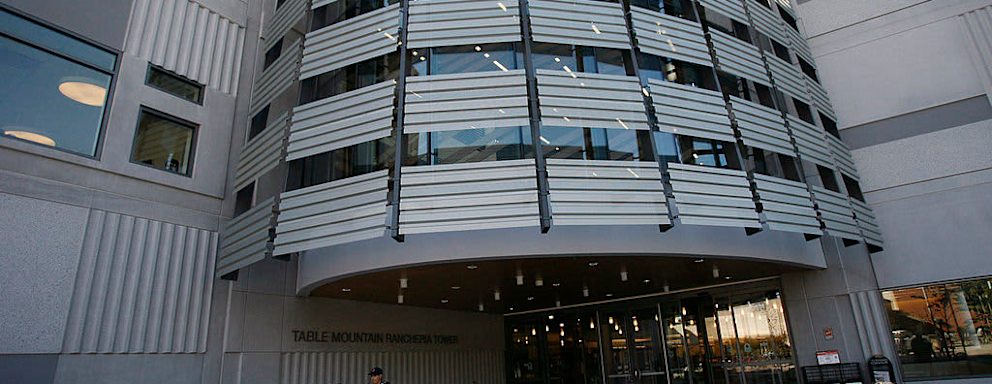Bill Would Fund Regional Public Universities’ Economic-Development Efforts
 Credit: Eric Paul Zamora / Fresno Bee / Tribune News Service / Getty Images
Credit: Eric Paul Zamora / Fresno Bee / Tribune News Service / Getty Images- A bipartisan bill follows recommendations to support regional public universities made by the Brookings Institution.
- It would set up a grant program for regional public universities’ workforce and community development efforts in distressed communities.
- The bill includes five-year grants of between $25 and $50 million.
Recently proposed legislation would give grants of between $25 million and $50 million to regional public universities to help distressed communities.
Regional public universities are considered “important anchor institutions to promote economic and community development for distressed communities,” according to a 2021 report by the Brookings Institution.
That Brookings Institution report recommended providing regional public universities five-year grants of up to $50 million to support economic and community development. Now, a bipartisan bill introduced by Rep. Jim Costa, a California Democrat, and Rep. Bruce Westerman, an Arizona Republican, would do exactly that.
Costa called the legislation “an investment in infrastructure” during a press conference at Fresno State University last week.
“For too long, regional public universities, I think, have been left behind in terms of getting their due,” Costa said.
Under H.R. 8688, four-year regional public universities would be eligible for the five-year grants for projects that “will spur economic development” in local communities, such as:
- Renovating buildings that will be accessible to the community, including facilities like libraries
- Developing apprenticeship programs
- Setting up programs to “provide seed money to early-stage companies for small business development”
- Boosting local broadband infrastructure
- Building and maintain publicly accessible health clinics
- Training community members to become healthcare professionals
- Partnering with local school districts to provide administrative and instructional support
- And funding research that is relevant to the economic needs of their communities
The legislation also mirrors the Brookings Institution’s recommendations in the type of university it applies to: The grants will be open to four-year public universities that serve distressed communities and were not designated as land-grant institutions under the Morrill Act of 1862 and are not “Research 1” universities that conduct that highest levels of research.
Providing more funding for regional public universities to pay for workforce and community development projects would have wide-ranging positive effects, according to the Brookings Institution. Building out local broadband, for instance, would provide community members with access to new job and educational opportunities.
Regional Public Universities Positioned for Big Impact
From New England to the West Coast, regional public universities were vital to their communities long before the pandemic, said Kevin R. McClure, an associate professor of higher education at the University of North Carolina Wilmington and the director of communications for the Alliance for Research on Regional Colleges.
“Many of them have very local or regionalized service areas, sometimes even down to specifying the counties that they serve in that area, and in many cases have forged incredibly deep ties with the communities that they serve in a number of ways,” McClure said.
Those ties include supporting local arts and history-education efforts, he said. They also serve as “hubs of civic debate,” host voting sites, and drive local economies through education and employment.
That deep attachment to their communities also means that regional public universities are uniquely positioned to administer community and economic development efforts, McClure said.
“They’ve got existing knowledge of the region,” he said. “They’ve already got partnerships that have been established. They have already been working hand-in-hand in some cases with the community and can operate as kind of a trusted broker.”
Regional public universities have also been historically underfunded compared to major research institutions and large land-grant universities, McClure said. He said regional public universities are less likely to receive private donations and large federal grants than those schools, and added that he was encouraged by the targeted nature of the proposed grant program.
“They are often overlooked, and so one of the things that I think is really exciting about this legislation is that it specifically mentions regional public universities as important institutions and as recipients of this financial support,” McClure said. “That doesn’t happen very often, if at all.”
McClure added that lawmakers should be cautious about how they administer the grant program and, if possible, try to avoid pitting institutions against each other for the funding.
“When there are competitive grant processes, especially when you’re kind of pitting institutions against one another, what you sometimes get is the institutions that have more infrastructure are able to pursue that kind of money,” he said, “and the ones that maybe need it the most, might struggle a bit.”
He added that, because the legislation is targeted toward regional public universities, the competitiveness aspect may not be as much of an issue for institutions that have historically been under-resourced.